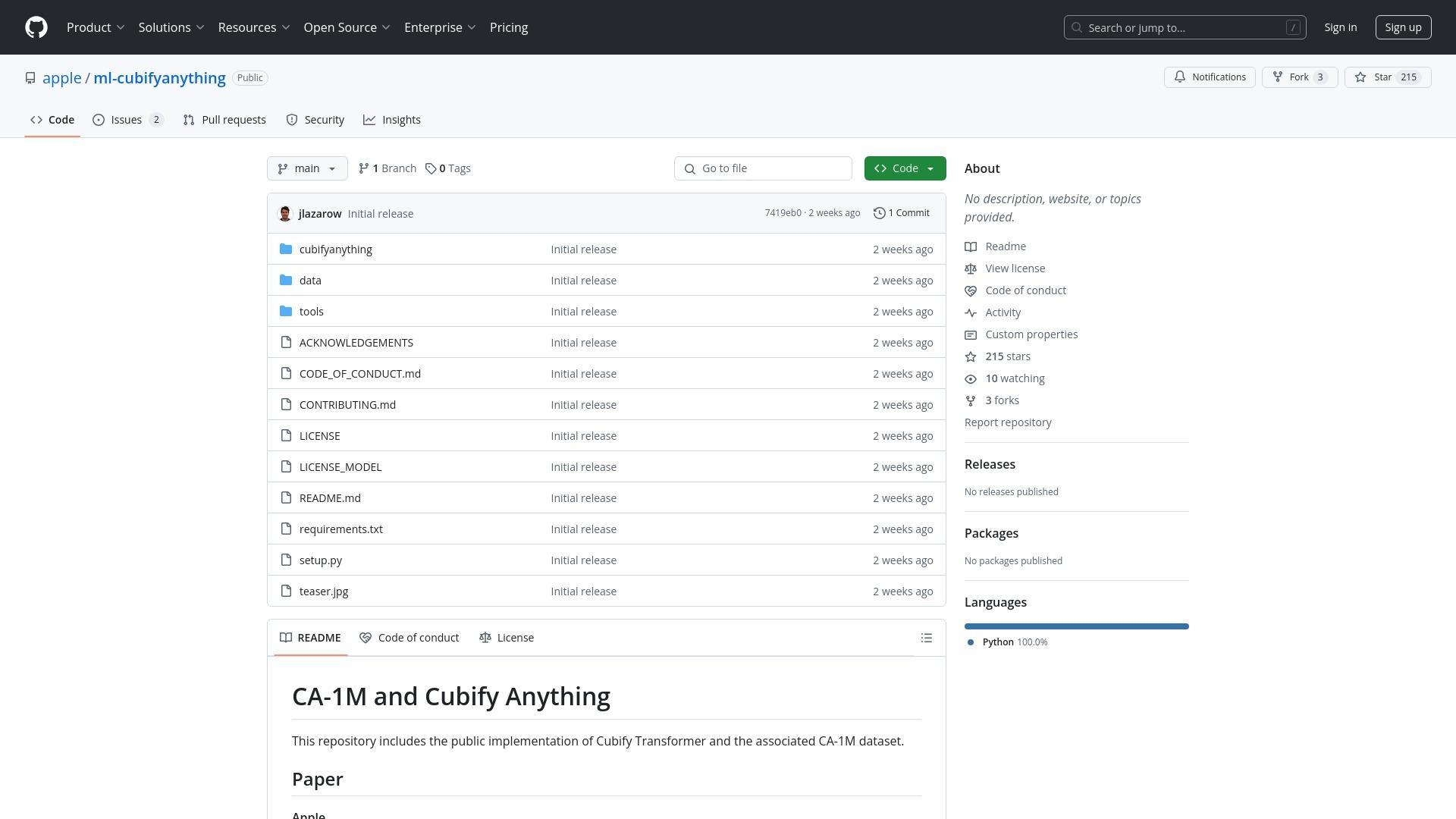Apple has released CA-1M, a comprehensive dataset for indoor 3D object detection, alongside Cubify Transformer (CuTR), a model designed to detect and place 3D bounding boxes around objects in indoor spaces. While the technology shows promise for AR/VR applications, the community response reveals both excitement about its capabilities and concerns about its licensing restrictions.
 |
|---|
| An interior space that could benefit from advanced 3D object detection technologies for home design and AR applications |
Complex Licensing Structure Creates Confusion
The project's licensing approach has sparked significant discussion among developers. Apple has implemented a multi-tiered licensing structure: sample code under the Apple Sample Code License, dataset under CC-by-NC-ND, and models under Apple ML Research Model Terms of Use. This fragmented approach has drawn criticism from the developer community.
They overcomplicate by using 3-4 different (sub) licenses in one project... why making it so confusing and elaborate? It's so useless to even use by 3rd party devs for making apps and releasing on their platform.
The Attribution-NonCommercial-NoDerivatives license for the dataset is particularly restrictive, limiting potential commercial applications. Some commenters noted that this licensing complexity might hinder broader adoption and experimentation with the technology.
Technical Performance Raises Questions
Community feedback on the technical performance of Cubify Transformer has been mixed. Some users have pointed out accuracy issues with the bounding box detection, particularly with objects like pictures on walls and ceiling beams. One commenter noted that the model often doesn't use [rotated cubes] when it should, leading to overstating the bounds, suggesting the system sometimes struggles with proper object alignment.
Interestingly, some developers claim to have seen better performance from private neural networks running on iPads using only RGB data without depth information. This raises questions about whether transformer-based approaches are optimal for this particular computer vision task.
Practical Applications for Home Design
Despite the technical and licensing concerns, many users see valuable potential applications for this technology. One of the most compelling use cases discussed is home design and furniture arrangement. Users expressed interest in scanning their homes with phone cameras and LiDAR to create 3D models where furniture can be virtually rearranged.
Current solutions like Scaniverse create complete meshes but don't separate individual objects, making virtual rearrangement difficult. Cubify's object detection approach could potentially solve this problem by identifying discrete objects within a space.
Integration with Web Technologies
The community is already exploring ways to extend and integrate this technology with web platforms. Several commenters shared resources for rendering USDZ scans in Three.js, a popular JavaScript 3D library, demonstrating the broader ecosystem developing around 3D scanning technologies.
The availability of viewers and rendering tools suggests that developers are actively working to make 3D object detection and visualization more accessible across different platforms.
Future Apple Platform Integration
Some commenters speculated about potential integration with Apple's platforms, particularly the Vision Pro. One user expressed surprise that this technology isn't already part of CoreML, Apple's machine learning framework, while another suggested it might be announced at the upcoming WWDC developer conference.
Given Apple's increasing focus on augmented reality experiences, Cubify Transformer could represent an important building block for future AR applications on Apple devices, potentially enabling more sophisticated environmental understanding and object interaction.
In conclusion, while Apple's CA-1M dataset and Cubify Transformer technology show promise for advancing 3D object detection, the restrictive licensing and mixed performance reviews highlight challenges that may limit its adoption. Nevertheless, the technology represents an important step toward more sophisticated environmental understanding for AR/VR applications, with potential implications for home design, gaming, and mixed reality experiences.
Reference: CA-1M and Cubify Anything
